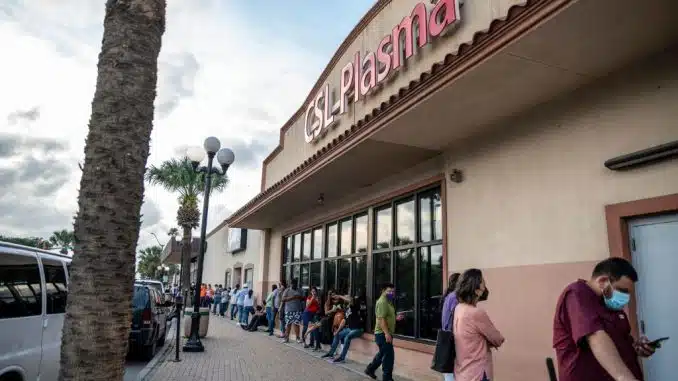Stephen Millies
September 16,
2024
Malcolm X
famously said, “show me a capitalist and I’ll show you a bloodsucker.” That’s
literally true for U.S. capitalism.

The United
States exported $37 billion worth of blood last year, making it the country’s
ninth-largest export. That’s $9 billion more than what Uncle Sam got from
selling 48 million metric tons of soybeans.
The Economist–an
181-year-old mouthpiece of the British and U.S. financial aristocracy–thinks
that’s great and wants to increase the bloodsucking.
Back in 1846,
The Economist blamed the Irish themselves for the famine that killed a million
Irish people, declaring it was “brought on by their own wickedness and folly.”
The same
magazine notes with approval that since 2020–that is, since the COVID-19
pandemic began–400 more of the bloodsucking plasma centers have opened across
the United States.
That’s in
addition to the 805 plasma centers already operating in 2019. It’s another sign
of the growing poverty of the U.S. working class.
These 1,200 or
so Dracula establishments are not set up in Beverly Hills or other fancy
neighborhoods. Poor and working people go there to sell their blood because
they desperately need money.
The Economist
pooh-poohs any health concerns for the poor folks who are economically
compelled to sell their blood:
Some feel
uncomfortable that poorer people are allowed to open their veins. But plasma,
which is mainly water, is quickly replaced by the body. Health checks exclude
the truly unwell and frequent donation seems safe (although more research could
be done in that area).
Nothing to worry
about here, although the magazine admits that “more research could be done in
that area.” People are allowed in the U.S. to sell their plasma twice a week.
That couldn’t have helped the donor’s immune systems during the COVID-19
pandemic, particularly seniors.
Are body parts
next?
What the
Economist ignores is that ghettos, barrios, Indigenous communities, and poorer
white neighborhoods are filled with plasma centers. In 2019, 43 of these
blood-sucking enterprises were located near the Mexican border.
Border Patrol
pigs lock up Mexican and other immigrant children in cages. But Mexicans can
use a B1/B2 visa to sell their blood in the U.S.
In many cases,
they do so to buy food. That’s what colonialism looks like. The U.S. government
stole half of Mexico in 1848 to expand slavery.
Health care
requires blood and blood products. Millions of people donate blood often during
blood drives organized by community organizations including unions.
What we’re
discussing here is how capitalist corporations exploit poor people who may be
endangering their health because they are forced to sell their blood.
One of these
companies, CSL Behring, had sales of over $9 billion in 2023. Behring operates
more than 300 plasma centers.
Right behind CSL
Behring is Takeda Pharmaceuticals, which has over 200 of the bloodsucking
establishments.
It’s not just
blood that’s needed. Thousands of patients are on waiting lists for kidneys and
livers.
There’s already
an illegal underground market for body parts in the United States. According to
the “free market” principles of the Economist, people should be able to sell
their body parts for the best price.
Of course,
nobody would do so unless they desperately needed the money for themselves or
their loved ones. The prospect of a legal market for body parts is reminiscent
of Jonathan Swift’s 295-year-old “Modest Proposal” for selling Irish children
to be eaten.
Swift’s famous
satire was written to expose the misery caused by English colonialism. The
market for kidneys and livers is real. Bood exports are another sign of how
decayed the U.S. economy has become and how oppressed the U.S. working class
is.

No comments:
Post a Comment